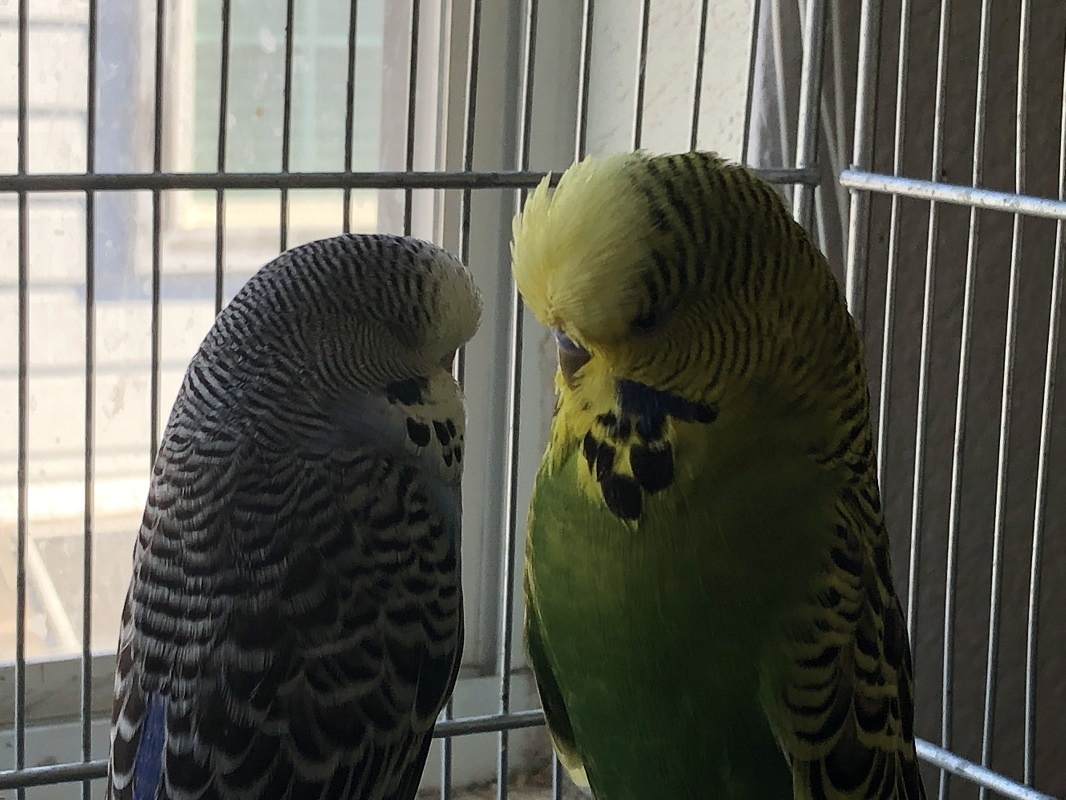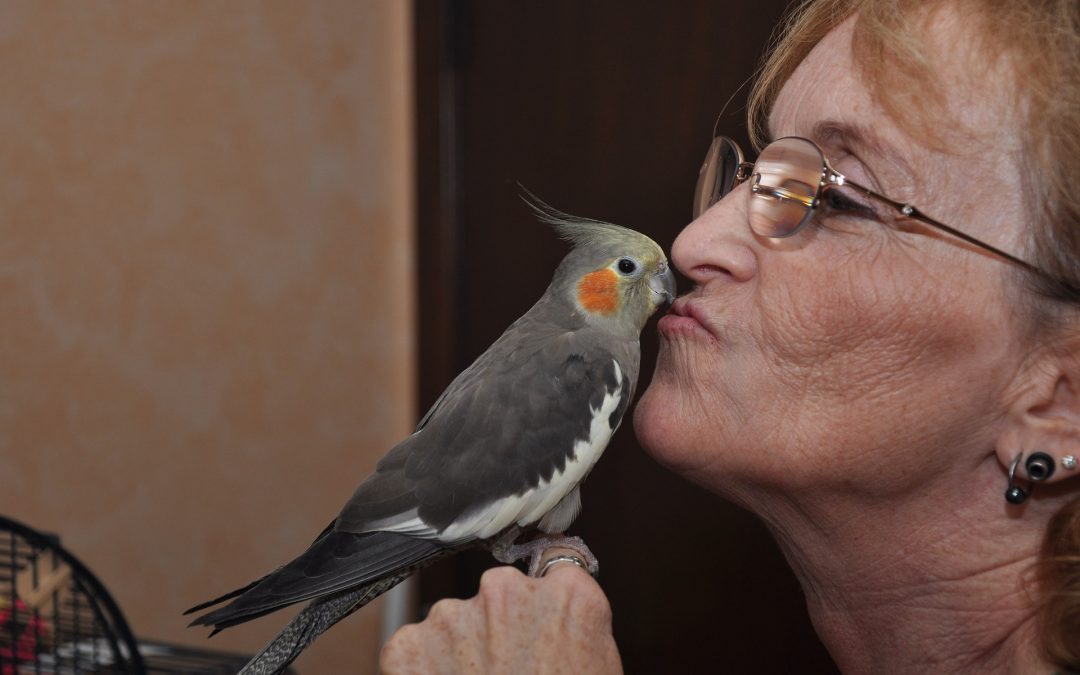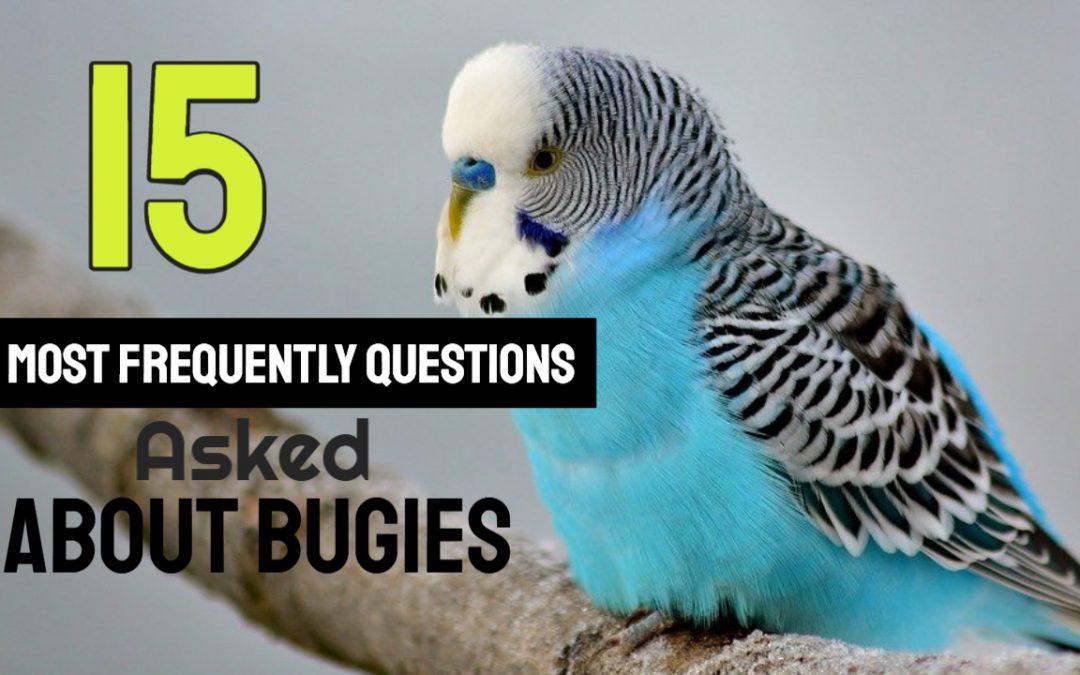English Budgie Care 101
If you are considering getting a budgie and are wondering about budgie care, this is the page for you! I believe that the place to start when considering caring for your budgie (or horse or dog or pig…) is to learn a bit about their origins. This will tell you what sort of food they are designed for, what type of habitat they suit and also explain a lot about their behaviour.
Budgies thrive in their wild environment without many of the issues we encounter with them in captivity. There are obvious advantages to captivity, like not dying of thirst or starvation during a drought, but also many disadvantages caused by a lack of understanding of their needs. So, where do these active little parrots come from and what does that tell us about budgie care?



English Budgie Basics:
Budgies are parakeets that originated in Australia. Whilst this country has the full range of habitats, from deserts to rain forest to alpine, budgies primarily live in the grassland areas. They are nomadic, moving to new areas in search food and water and able to travel up to hundreds of kilometres a day. This means they can be found in many parts of Australia, from the inland desert areas to some coastal regions as they travel for food.
Wild budgies live in flocks that can vary from a few birds to huge, deafening masses of hundreds of thousands. When specific factors trigger breeding they will breed prolifically, producing three clutches of up to seven or eight chicks, although four chicks is the average. However the outback of Australia can go years without rain and reach temperatures of 49°C (120°F), burning up any food or water. In these times the budgies do not breed, and many die.
Below you will find information on diet, accommodation, toys, companionship, safety and health. If you wish to learn a little more about budgie terminology, like why some are called parakeets, american, or english budgies, then simply click here.
So, how does knowing about their origin help us plan our budgie care?
English Budgies Diet:
As you now know, budgies live in mostly grassland areas. This means that their diet mostly comprises of seeds, shoots and other plant matter. They have access to a variety of grasses, including Mitchell grass, spinifex grasses, wild oats, canary grass and many others. These supply the budgie with greens and seeds of varying development from newly formed and unripe, through to fully ripe dry seeds like those we see in pet shops.
They have access to a range of trees that provide them with leaves, buds, fruit and bark to chew on. They will also take the occasional insect and budgies are known to eat the charcoal from burned trees, which is believed to help in times of illness.
As far as drinking goes, budgies access water wherever they can find it from natural sources such as ponds and puddles, to man made sources such as cattle troughs. In times of extreme heat large flocks of budgies descend on water sources, sometimes piling upon each other to get to the water. This results in many drowning and the water supply being fouled.
In the wild your budgie would spend the majority of it’s day traveling and searching for food and water. This requires exercise, curiosity and intelligence. They would fly long distances, investigate potential plants and learn through experience what to look for and how to get it. This foraging behaviour keeps both their body and mind active and healthy and we can replicate some of those benefits for our pets.
There is much to consider when planning a healthy diet for your budgie, so I have a separate page here to go into specifics based on what we already know. It covers the various food options and how to use their foraging instinct to keep them entertained and healthy.
English Budgies Accommodation:
As we have discussed budgies are nomadic by nature, they need to be able to fly a long way in search of food and water. This means they are very active little parrots with energy to burn and curiosity to match!
You should try to supply your budgies with as large a living area as possible. This means the largest suitable cage you can afford, or a flight or aviary. The cage or aviary should be furnished with safe perches, feed and water bowls and a few carefully selected toys.
If you are able to provide them with safe foraging opportunities they will need fewer toys to keep them entertained as they can engage in their natural behaviours to their hearts content!
There is a lot to consider when planing your budgies home, so read on about cages and aviaries on their own pages.
English Budgies Entertainment:
Due to being designed for long distance travel, budgies in captivity will have lots of spare energy. If you can devise a feed system that encouraging foraging you will have provided for hours of physical and mental stimulation. From there they will need fewer toys to keep them entertained, but a few well-chosen ones can be a lot of fun. These must be safe for your bird so when selecting them take care. Anything that the budgie can catch a foot, toenail or beak in should be avoided or only used under supervision.
You should also be aware that your budgie will at least taste, and at most try to chew to pieces, anything you give it! So avoid anything coated with potentially poisonous substances. Many budgies have also died from chewing and ingesting fibres from rope toys, which cause blockages in their digestive tract. If you don’t think it would be good for a child to chew on, then do not give it to your budgie!
English Budgies Companionship:
As budgies naturally live in flocks, they have a strong need for social activities. This means that unless you are home most of the time and are able to give your budgie regular time out of its cage with you, you would be better to get another budgie for companionship (or two or three…it can be hard to stop with just one).
Tame budgies are absolutely delightful to have out of their cage with you. They will climb all over you, chew the page you are writing on, attack the tip of your pen or pencil and generally make it difficult to ignore them! So if you can only have one budgie, make it a tame one so it can avoid a life locked up in a cage without friends. Better still have two or more tame budgies that can come out of their cage and have races around the room, but still keep each other company when they have to go ‘home’.
There are issues to be considered when choosing a friend for your budgie, so it is best to do some research before heading out to buy a new friend.
English Budgie Safety:
It pays to be aware of potential hazards to your curious, agile and intelligent little pets. They will find a toilet to fall into, pot of hot mashed potato to land in (yes, I have had budgie foot prints in my dinner), a previously unnoticed window to fly into and the solitary stray piece of thread in the house to get tangled in!
There are simple ways to avoid some of these events, however at one time or another something is bound to go wrong. So please supervise your budgie whenever it is out of it cage, and double-check anything you put in their cage.
As far as your budgie care goes, safety should come first.
English Budgie Health:
The life of a wild budgie is not an easy one. As mentioned above, the inland areas of Australia can become incredibly hot and dry, with many birds dying as a result. What this means for us, when considering budgie care, is that pet budgies are very hardy. They can kept in many different environments, from the very hot to areas where it snows.
However, this is not an excuse for poor budgie care! Making sure your budgie has a good varied diet, access to clean water and plenty of exercise and mental stimulation, is the best way to ensure it stays healthy.
Get used to observing your budgie so that you can tell if it is looking different than usual. This could be a sign that all is not well. In the wild predators would single out the sick budgies, so they will try to look normal for as long as possible. This means that if you budgie looks sick, it is likely quite unwell and you should act immediately. It pays to find out before hand if there is a vet nearby who is used to dealing with birds in case of an emergency.
Signs of a sick budgie can be found on the Budgie Health page.
The basic first aid for a sick budgie is put it somewhere warm and dark so it can rest quietly until you can get it to a vet.
I have been given a guide to a basic first aid kit for budgerigars, written by a very knowledgeable budgie breeder. It was written with budgie breeders in mind so some of it may not be applicable for the pet budgie owner (or should that be pet budgie owned person!). A large part of good budgie care is being ready for any eventuality, so have a read and be prepared.
Do you have companion birds?
Don’t forget to say hello to our birds!!!

Everything you need to now about cockatiel diet
The health and vitality of your Cockatiel depends entirely on the right kind of diet.The perfect diet not only means the right amount but also the right combination ofthe essential nutrients required by your Cockatiel. We need to be even morecareful about the...

13 Fun Facts About Macaws | Bird and Beyond
1. Macaws Can Live More Than 80 YearsMacaws live to be around 60 years in the wild on average, and in some cases this can extend for up to 80 years and even as long as 100 years. When kept as pets, macaws are often known for outliving their owners! In the wild, their...

15 Most Frequently Asked Questions about Budgies
15Frequently Asked Questions.Here are some most common questions about bugies. When people refer to an "English" budgie they are generally talking about a budgie that is significantly bigger than the wild Australian budgerigar and with characteristics and features...

All you need to know about Budgerigar
Budgerigars are among the most popular pet birds for good reason. These charismatic little parakeets are loveable and affectionate. They are easy to tame if they are acquired at a young age and are able to mimic speech like larger parrots. Budgies are easy to care for...

0 Comments